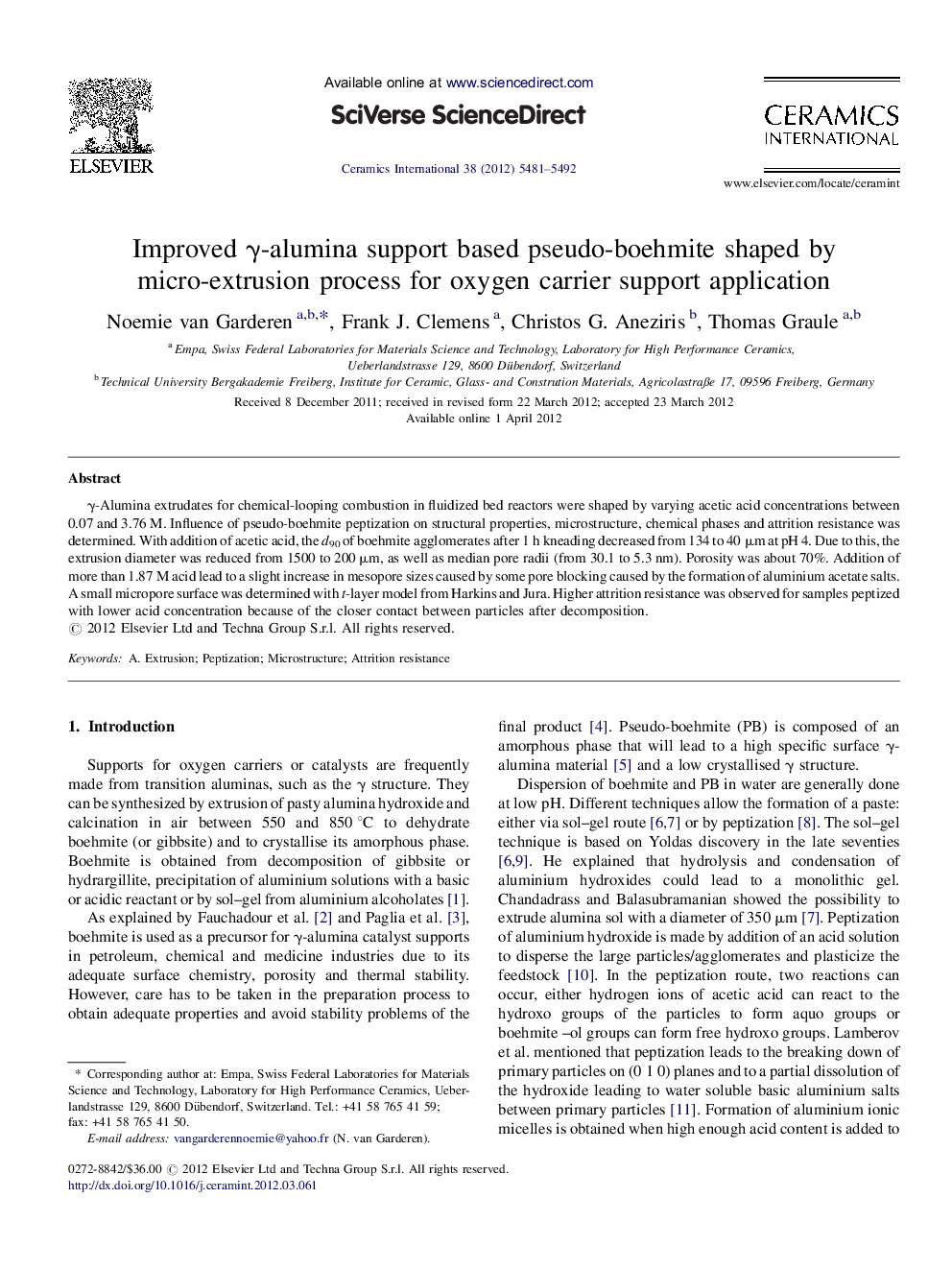| Article ID | Journal | Published Year | Pages | File Type |
|---|---|---|---|---|
| 1461933 | Ceramics International | 2012 | 12 Pages |
γ-Alumina extrudates for chemical-looping combustion in fluidized bed reactors were shaped by varying acetic acid concentrations between 0.07 and 3.76 M. Influence of pseudo-boehmite peptization on structural properties, microstructure, chemical phases and attrition resistance was determined. With addition of acetic acid, the d90 of boehmite agglomerates after 1 h kneading decreased from 134 to 40 μm at pH 4. Due to this, the extrusion diameter was reduced from 1500 to 200 μm, as well as median pore radii (from 30.1 to 5.3 nm). Porosity was about 70%. Addition of more than 1.87 M acid lead to a slight increase in mesopore sizes caused by some pore blocking caused by the formation of aluminium acetate salts. A small micropore surface was determined with t-layer model from Harkins and Jura. Higher attrition resistance was observed for samples peptized with lower acid concentration because of the closer contact between particles after decomposition.
